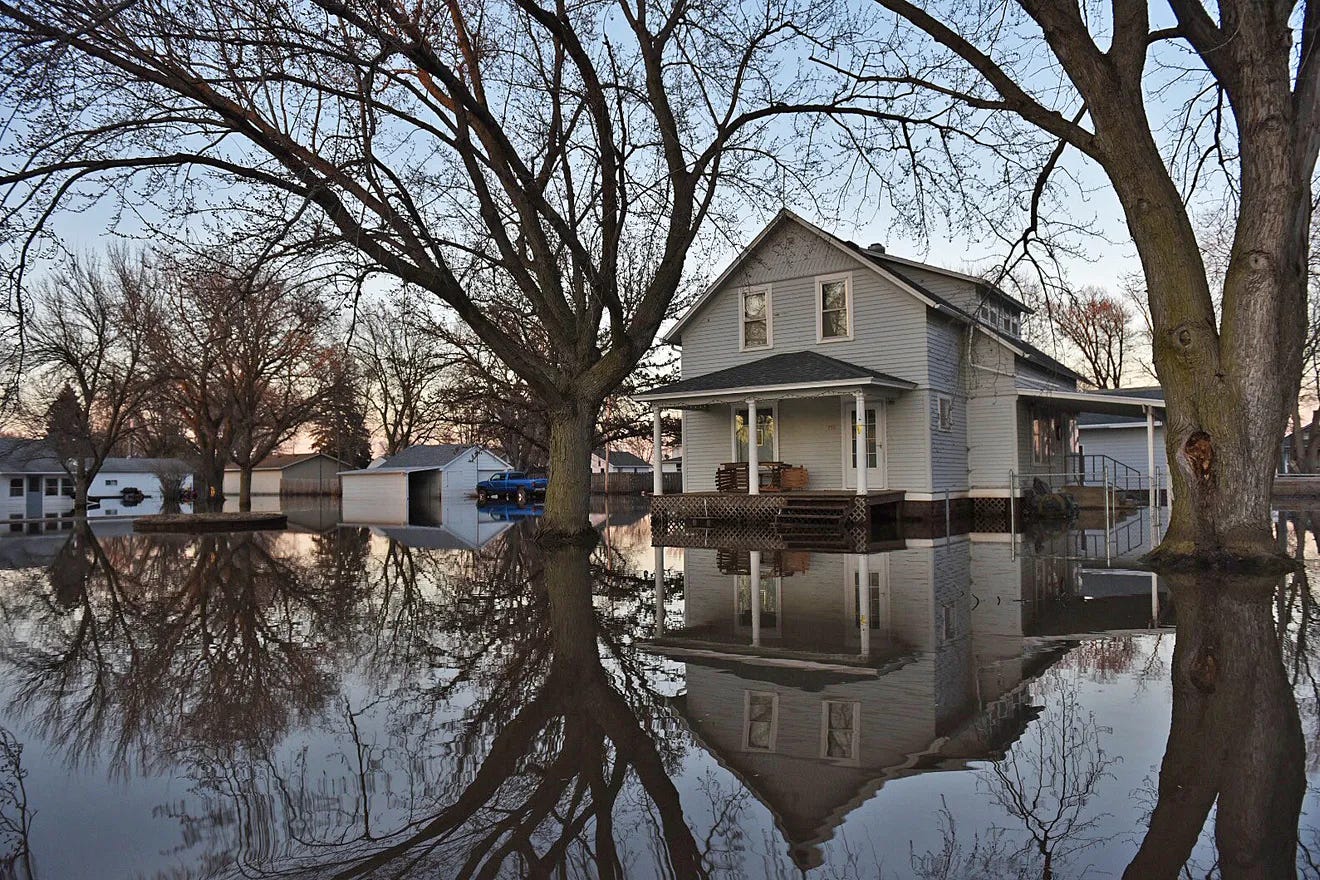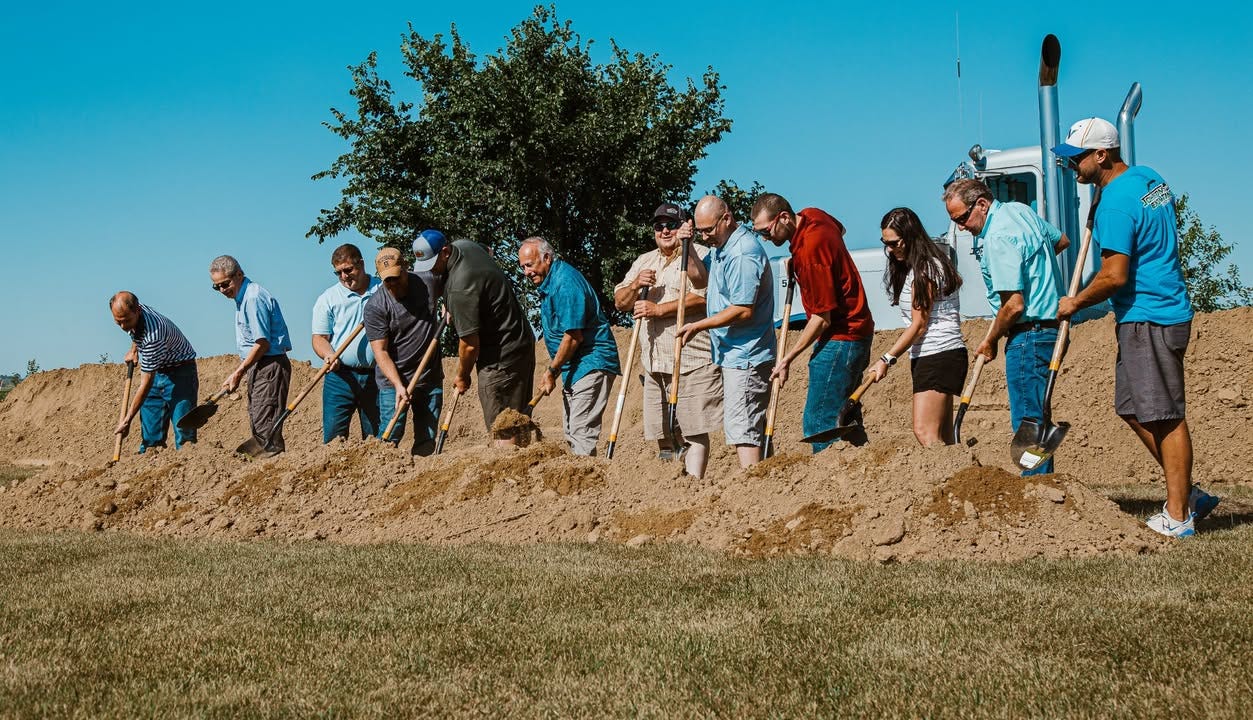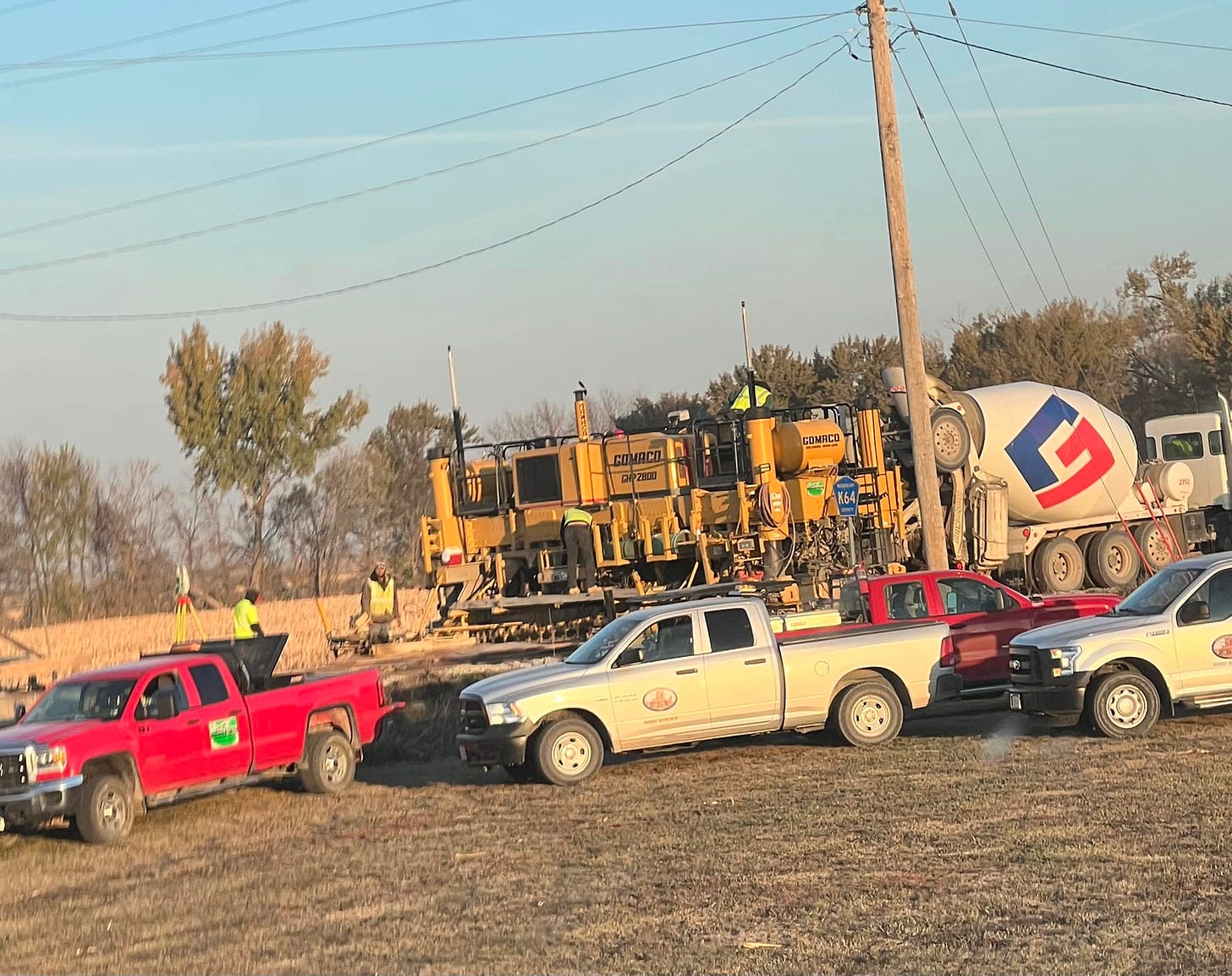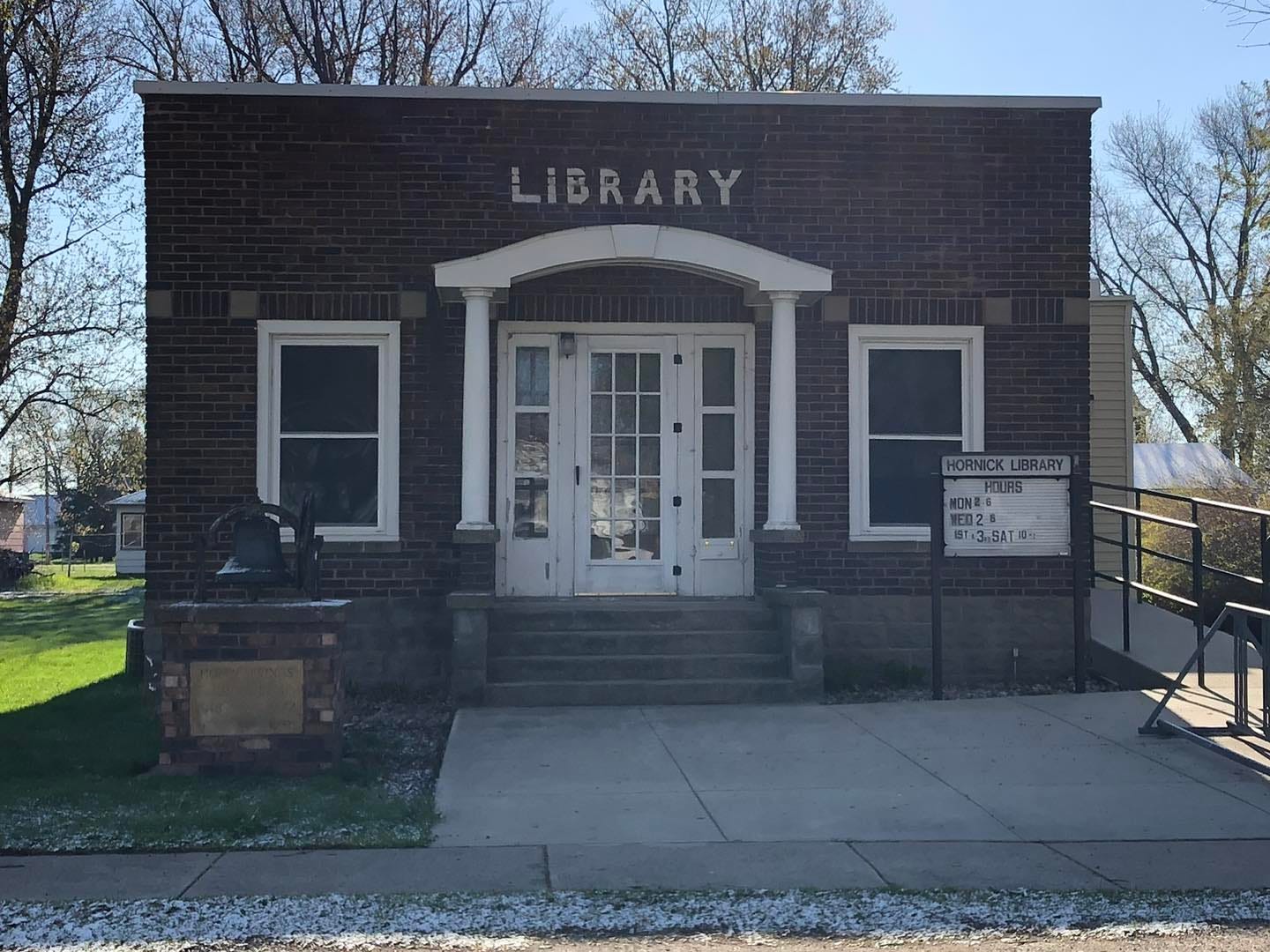Six years ago on March 15 floodwaters forced the evacuation of the entire town of Hornick, Iowa, population 252. It was four days before residents were allowed to return to this Woodbury County burg.
A "bomb cyclone" mix of rain and snow, combined with a rapid warming of frozen ground, had triggered massive flooding along the Missouri River. In Hornick, five miles from the farm where I grew up, about one-quarter of the homes were damaged when the swollen contents of the West Fork of the Little Sioux River overtopped the levee east of town.
Some homes and businesses were inundated by four feet of water, ruining appliances and furniture; others had damage to finished basements and furnaces. The United Methodist Church had so much water and sewage in its basement that services were moved to a neighboring town for about two weeks; the basement required almost two years of work. But no lives were lost.
It wasn't the first go-round for the town. In May of 1996, residents also had experienced flooding. Most did not have flood insurance and weren't eligible for FEMA funds.
When the floodwaters receded again in 2019, Mayor Scott Mitchell was losing sleep. "I wasn't sure what would happen to the town," he says. His worst fears never materialized, and about 95% of Hornick residents returned to repair and restore their homes and properties.
But he knew maintaining the status quo wasn't enough to ensure Hornick's future survival. An earthen berm had been attempted back in 1996. Mitchell called a series of town halls to find out if residents and nearby farmers wanted the town to apply for a grant from a new statewide resource, the Iowa Flood Recovery Fund. A berm would be constructed three feet above the town's 500-year-flood elevation level, protecting the east, north, and west perimeters of Hornick, at a cost of $2.1 million.
Mitchell knew the grant application would be a huge undertaking, and require tremendous paperwork. He wanted to make sure residents would back the flood protection project 100%. A show of hands confirmed it would win their support, so Mitchell and the city council began applying for the grant.
It Takes More Than a Village
The Iowa Flood Mitigation Program was signed into law in 2012 by former Governor Branstad to help communities break the reoccurring cycle of flooding and repair by providing funds to eliminate or reduce known risks. It's funded by a sales tax increment within the applicant's boundaries and state appropriations to the Flood Mitigation Fund. In 2019, the Flood Recovery Fund was created, with an additional $21 million from the Iowa legislature in 2020 available to counties designated a federal disaster and where FEMA Individual Assistance Program is activated.
The timing was right, and in 2019, the Iowa Flood Mitigation Board awarded a total of $15 million to several flooded communities, including Hamburg, Pacific Junction, and Hornick.
Hornick broke ground on the berm in June 2022. It was completed the following spring.
But the town still had substantial damage to its streets and roads. "We lost the entire base of our roads, and the traffic and equipment used for clean-up and repair to homes caused a lot of damage," Mitchell says. "We did our best to get the streets usable, but more was needed."
The town applied for a FEMA Public Assistance Grant, which would cover over 75% of the costs. Hornick was included in a federal disaster area, so the state contributed 10%. The town would shoulder a 15% stake in the cost, and is using TIFs (Tax-Incremental Financing) from annexing New Coop south of town.
Still, it's been another challenge. "FEMA isn't really tailored to small communities like Hornick," Mitchell says. "As a mayor, my $200 per month salary works out to pennies on the dollar for the amount of time and effort and cumbersome paperwork required."
During the interval between the grant application, and when the work began, road repair costs ballooned from $1 million.
Today the town is working 24/7 to meet its construction deadlines for street repairs by August 1, the date when the FEMA grant expires. "If we need an extension, we can apply," Mitchell says. "But we will be very close."
How Did We Get Here
Hornick's flooding was on a small scale, compared to the 2025 headlines of massive flooding in central Texas and elsewhere. However, its boots-on-the-ground perspective illustrates the commonsense approach of combining state emergency disaster funding with recovery funding provided by the Federal government.
The Federal Emergency Management Agency (FEMA) was created in 1979 by President Carter with a mission to help before, during, and following natural disasters with emergency personnel, supplies, and equipment. It became an agency within the Dept. of Homeland Security in 2003, not long before the New Orleans disaster caused by Hurricane Katrina. FEMA, which has 10 regional offices, coordinates with local and state governments, and reimburses for debris removal and rebuilding public infrastructure. Individuals also can apply for FEMA funds for home repairs, rental assistance, etc.
In recent months President Trump has described FEMA itself as a disaster, stating his intention to eliminate it by December of 2025, and rely on state block grants. He's formed a FEMA Review Council, including governors, cabinet members, and emergency management experts to recommend changes by mid-November.
Jeremy Greenberg, the top disaster coordinator at FEMA since 2020 recently resigned, and Tony Robinson, the Region 6 administrator and his deputy also have left. Shortly after acting director Cam Hamilton told legislators at a May hearing that FEMA shouldn't be eliminated, he was replaced by David Richardson, who has no prior emergency management experience. At least 16 senior FEMA personnel were fired, and 2,000 employees – one-third of its staff-- either were fired or accepted incentives to retire.
Extreme weather events have exacerbated demands on FEMA. The National Oceanic and Atmospheric Administration estimated that damage from Helene and Milton totaled $78.7 billion and $34.3 billion, respectively. Total economic loss from the California wildfires, which includes more than property damage, could hit $275 billion, according to AccuWeather.
Texas, Louisiana, and Florida have received the most FEMA funds since 2015.
Could states handle these escalating demands alone? Most states don't have full-time legislatures. Unlike the Federal government, states must balance their budgets.
Some states, including Iowa, may be better prepared than others. Mitchell praises Iowa's Dept. of Homeland Security, calling it a "valuable resource". He adds, "It acts as a buffer between mayors and FEMA. In Iowa in 2019, FEMA was here in Hornick before the flooding was over." He points out that every county in Iowa has an Emergency Management Agency, with coordinators who work with Iowa Homeland Security and FEMA.
However, FEMA's response in Texas today is being slowed because of a new rule under Secretary of Homeland Security Kristi Noem to sign off on every expenditure over $100,000.
Americans at Ground Zero
I don't remember the town of Hornick flooding when I was growing up there. I recall a scary time when I attended school in a nearby, even smaller town on the banks of the West Branch of the Little Sioux. Years later in 1996, water overflowed its banks, flooding the town of Holly Springs. FEMA offered buyouts to residents, and my beloved town of Holly Springs was removed from the map.
FEMA cannot by law be abolished. In the past week, we've heard less talk of eliminating FEMA, and more about reforming or re-organizing it. A bipartisan bill in Congress would simplify individual applications for disaster assistance and remove FEMA from the Dept. of Homeland Security, giving it a direct conduit to the executive branch. Another bill would make it easier for rural towns to get FEMA assistance and access funds to prevent damages from extreme weather.
"FEMA needs restructuring," Mitchell agrees. Based on his experience, he feels it's reasonable for states to have "more skin in the game" and he likes the idea of "less red tape."
Mitchell, now serving his second term as mayor, can look back from the perspective of six years after the flood. "We had so many people stepping up to help one another, It brought our town closer together," he says. "Looking down from my seat at a mobile command center, I'll never forget the sight of so many people here helping, and at least 90% had no ties to the town. The Salvation Army and other organizations did amazing things for us."
Mitchell chalks it up to Midwestern values. But he's quick to add, "I wouldn't say I'd want it to happen again." He's relieved by the measures put in place to protect his town but admits he doesn't know when a future 15-inch downpour could wreak havoc with this sense of security.
The frequency and severity of weather-related disasters is not a figment of our imaginations. Of the 10 years with the most natural disasters, nine were in the last decade. Not only are our childhood libraries, schools, or city parks threatened. Entire coastlines of the U.S. are at risk.
With hurricane and wildfire seasons looming, isn't one of the first jobs of the federal government to protect its people and property?
Like Dorothy in the Wizard of Oz who woke up after the tornado to discover she was no longer in Kansas, are we in danger of waking up one day to discover our familiar landmarks have been erased?
"There's no place like home. There's no place like home," we repeat.
.
I’m proud to be a member of the Iowa Writers’ Collaborative. Meet our writers here, or subscribe to our free weekly roundups, “our Sunday morning newspaper,” and our Wednesday “flipside” edition featuring sports, music, culture, and other topics. Thank you!








Well written and informative. FEMA needs to exist for the welfare of our country. And it does NOT need to be politicized!
I just hope after any reorganization that FEMA is not politicized - which has already happened under Trump 1.0 and is happening under T 2.0.
Buit he made GA beg three times before he would help them recover from the hurricane and he would probably not help Blue states like CA at all unless someone points out that Trump voters live there (as happened before with Orange County after major fires).
I've read that Democratic governors are threatening to keep federal taxes collected in their states so they can use those funds to replace any funds withheld. It's only "fair" as Blue states typically send more tax dollars than they collect while Red states typically get more tax dollars than they send...
At least some state politicians have SOME common sense surrounding preventing disasters...